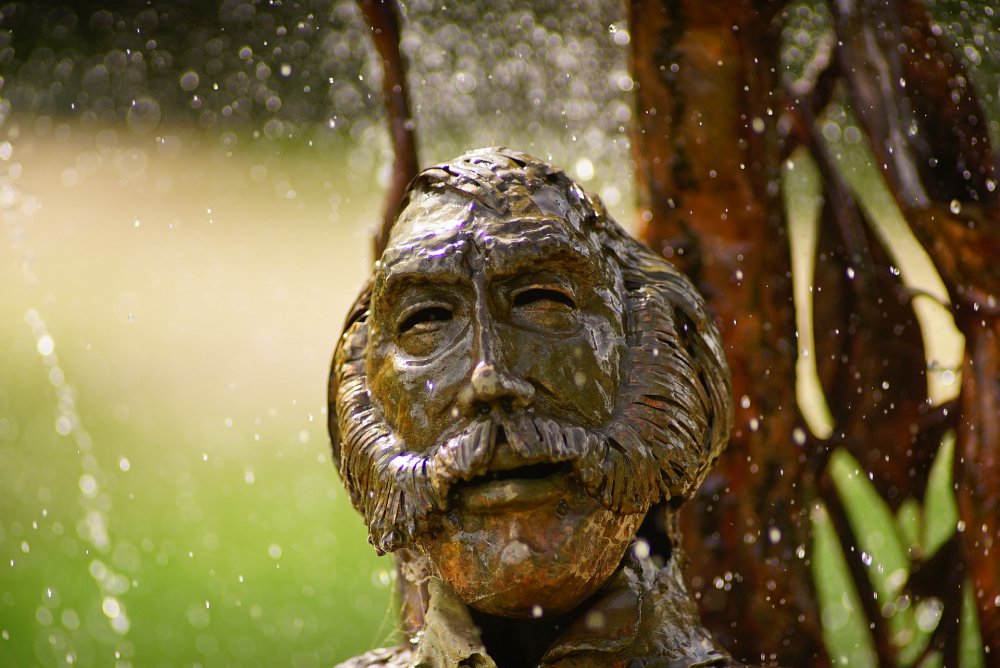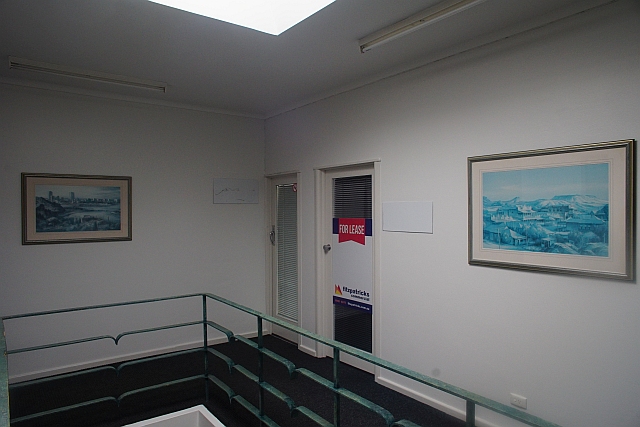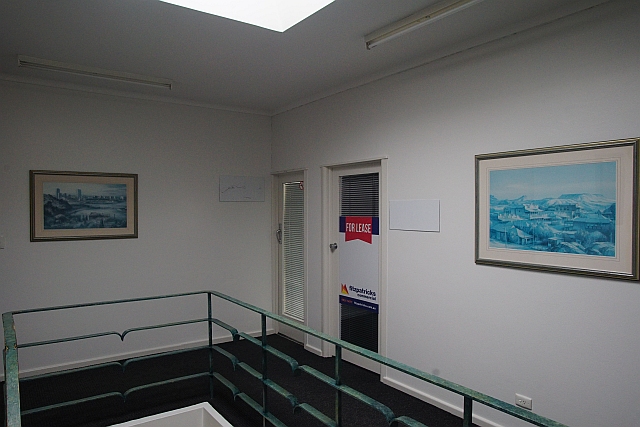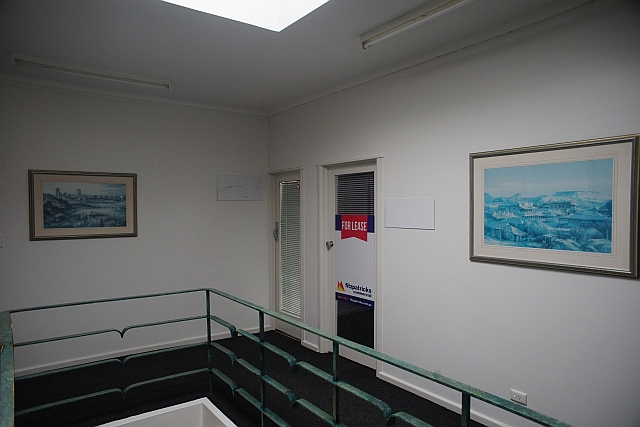-
Posts
1,623 -
Joined
-
Last visited
Content Type
Profiles
Forums
Articles
Posts posted by noone
-
-
4 hours ago, kye said:
So, why are there no 16-50+ F4 lenses?
Everyone makes a 16-35/2.8 and a 24-70/2.8, but lots of people slowed the aperture by a stop and made 24-105/4 and there's even a Nikon 24-120/4, but no-one seems to have slowed the aperture of the 16-35 and extended it's zoom range.
A 24-120 is 60% longer than 24-70, but even if they could only add 50% more range to the 16-35 that would still make it a 16-52mm lens.
Then you could get an extra prime in there. For people who like to shoot wider than 24, this would be a big improvement.
FF, APSC or M43 or other? There are KIT lenses close to that (Sony APSC 16-50 3.5-5.6) Fuji makes a 16-80 f4 APSC lens that seems very nice from reviews.
-
-
1 minute ago, herein2020 said:
I am aware that the lenses do not have a crop, my crop reference is strictly referring to the crop factor of the S5 specifically when the Sigma L mount to EF mount adapter is added AND when the S5 is then placed into APS-C crop mode. The part I don't know is if the Sigma Adapter or the S5 firmware tells it to set the crop factor of the SENSOR to 1.6x because it detects a Canon EF-S lens or if it sets the SENSOR crop factor to 1.5x because it is a Panasonic.
The adapter is not an L mount to EF-s mount one is it? (it would not matter if it was). Canon made a variety of EF cameras with different crops and some were APSC with 1.6x and some were APSH 1.3x but they never made any APSH lenses. There would be little point in an adapter changing the crop factor to match the other (donor) sensor size rather than the sensor size used in crop mode of the FF camera going to be used.
That would be pointless and add pointless cost in making the adapter. Nah, it will not give a 1.6x crop on a 1.5x crop camera and the only thing is there MIGHT be some lenses that vignette a little more (but I doubt it will matter).
-
Because the APSC lenses do not have to cover the same size sensor, they can be made smaller effectively and in some cases might not cover the entire sensor but that does not change the focal length. A 50mm lens remains a 50mm lens regardless of the format but the angle of view differs with formats. SOME Canon APSC lenses DO cover FF (you just can not use them on CANON FF DSLR cameras in many cases because of the lens design). The cheap and cheerful Canon APSC kit lenses cover FF from about 23/24mm up (I use it on my FF Sony from time to time) so if you put a Canon kit lens on your FF camera and compared it to a native FF lens at 24mm (zoom or prime), the angle of view would be the same (well there may well be difference because lenses are not often exactly what the focal length says it is and one 24mm lens might actually be 23.5 while another might be 24.5) but essentially the same.
-
Canon APSC CAMERAS have a 1.6x crop, NOT the lenses. If you use a Canon APSC lens on an M43 camera it would be the same as any other M43 lens and a 2x "crop" so 50mm has a 100mm FF angle of view.
If you use the Canon 50mm APSC lens on a Sony APSC camera it would have a 75mm FF angle of view against an 80mm FF angle of view on Canon.
-
I am very happy with my Canon 17 tilt shift (still my all time favourite lens) but this new even wider shift lens looks very interesting.
https://www.venuslens.net/product/15mm-f-4-5-zero-d-shift/
No tilt but I do not use tilt that much and it is not as noticeable on wider lenses than longer ones anyway
Even works on medium format with shift (though slightly less shift than FF).
Thoughts?
-
Dunno about that but my take is how much I dislike how that Pocket 2 makes buildings lean in (with and without the wide angle adapter in both stills and video.
-
41 minutes ago, newfoundmass said:
I'm not sure how popular this will end up being.
Maybe more than most would think.
Maybe not to so many buyers but I see some buyers getting quite a few.
Six or so of these would be like buying a car to many businesses, just the right tool for the job for many.
-
Price is what people will pay for it.
Very niche but it MIGHT be a truly wonderful drone camera (in the right hands, IE not mine) or for setting up portable/temporary security system with multiple cameras.
Most will be used where they do not need an ND filter I think.
I am kind of bemused why they did not use the regular GH5 sensor instead in a modular camera though I guess this one is just better for the specs they wanted in it.
Or maybe they over purchased on GH5s sensors and this will get a few more sold than otherwise?
-
1 hour ago, Oliver Daniel said:
The image will most certainly look thinner in poor lighting conditions as there’s less information captured by each pixel. Not in all situations but it’s certainly a big factor.
I agree if it is POOR lighting. If it is LOW lighting and the particular camera can handle it, no.
Some cameras simply can not handle low light others handle it to varying degrees but every camera does have a limit.
It is less of an issue with still photography because you can often use a longer shutter speed.
-
3 hours ago, Oliver Daniel said:
It matters to pump up those pixels with a high quality of light - ensuring you have juicer, healthier pixels to play with. I’ve even seen some people “light” with their A7S ISO. Great feature for certain needs, but it’s not a light and the image will certainly feel thinner.
While I think it is crazy to not light something when you CAN, a lot of the time shooting in available light is the goal or even all you can do and in that case having better DR and colour depth and tonality with a camera like an A7s beats a camera that starts off better but falls away a lot quicker.
I disagree that shooting in lower light levels makes an image "thinner" necessarily (though it CAN).
-
12 hours ago, kye said:
80s music always sounds best on stereos also made in the 80s. I think there's something we can all take away from that 🙂
Nah, 80s music sound best when played live by the original bands playing pension fund tours (though mostly with young backing musicians doing a lot of the actual playing).
-
7 hours ago, leslie said:
Probably doesn't make a lot of sense an f8 mirror lens, but what the hell. I have set up a bird feeder out the front, the 500mm should bring them in a little closer 😀
Makes a lot of sense to me.
Cheaper and works well and a lot lighter and smaller than otherwise.
I did have a mirror lens years ago (forgot about it) though it was not for long since I destroyed it but it was ok.
Makes more sense to me than the new Canon long lens pair though they are still good.
When I still had a LA-EA4 adapter I considered the Minolta 500mm auto focus mirror lens but since i have always had the old Tamron I passed.
-
7 hours ago, hyalinejim said:
Actually from reading that link it turns out that, for good or ill, DXO doesn't take colour accuracy into account in their "portrait" rating.
They say all DSLRs score similarly for colour accuracy.
There's a lot on that page I don't understand. But I have the sense that their portrait rating has a lot more to do with quantitative than qualitative issues.
In short, numbers are compelling but in reality I'd be hesitant to use their rating in deciding which camera to buy to take photos of people in a studio.
I would NEVER use it for SUBJECTIVE choices (like colour choice).
DXO is a great GUIDE but I would never take it as gospel. If choosing gear, it is just one of a half dozen sites I would look at (including this one when it comes to video).
I have always found Sony to be more ACCURATE colour than most (other than the AWB in some light issue) and when i have had Canon cameras and just shooting Jpegs or video, I have set them to vivid so hardly accurate.
-
Some quick and dirty shots with three different Canon lenses adapted on my FF A7s. The APSC kit lens and two (much older) Canon Ls, one FD and one EF.
Not for image quality, all taken as close as possible from the same place with the same view but were all hand held and two used the same adapter so I would go back in and change the lenses before going back out in the corridor.
I used a different adapter to the cheap Fotga I normally would use because it shows the focal length while zooming and the Fotga does not.
I do not use it normally because it plays up a LOT and needs dismounting and remounting several times before it works sometimes (it is used on my ancient MF 300 2.8 adaptall where it does not play up since it is a "dumb" lens).
A surprise, one of my Canon EF lenses is actually wider than the other two at 24mm so the shot here is 25mm
There IS still vignetting with the APSC lens but not blackening.
All at f8
Focusing errors are mine not the lens as all were manually focused.
I want to go out and take some proper photos with other lenses and I considered taking these three instead but it is such a nice day before three days of rain predicted here so this will do.
-
For those interested, Google seems to work.
Mind you I can not find anyone with a definition on how to work out colour depth, but plenty on working out file sizes.
Makes sense really given that not all photos are the same size but can have varying colour depth for varying size sensors.
-
Multiplying resolution x bit depth will give you file size but NOT colour depth.
I am no expert on this but I would suggest to anyone doing research from those who ARE qualified as with anything photographic would be much more useful other than as general interest.
-
32 minutes ago, tupp said:
Yeah. All of those photos by Richard Avedon, Irving Penn and Victor Skrebneskiphotos were terrible!
I said SOME and I purchased a couple of vintage photographic magazines (as in magazines selling photo gear) recently and the colours were terrible
As for the rest, since I disagree with you on many things and do not want to get into another five pages of yes, no, yes, no, I will leave it at that with you.
-
30 minutes ago, kye said:
Interesting concept from DXO - I learned a few things from that. Firstly that my GH5 is way better than I thought, being only 0.1 down from the 5D3 and also that it's way above my Canon 700D which I thought was a pretty capable stills camera. People always said the GH5 was weak for still images and I kind of just believed them, but I'll adjust my thinking!
NOTHING wrong with the Gh5. IF you go to higher ISOs, it does not hold up as well as modern cameras with larger sensors but it is still ok in lower light and if you control the light is just fine.
Canon 5D3 is a very nice camera but its sensor was a bit behind some other FF sensors of its time
I think the 700D IS a pretty capable stills camera.
I keep thinking I want a Canon DSLR to use my Canon EF mount AF lenses (Sigma 150 2.8 macro for a start) and the 5D iii, even 5Dii and 6D as well as APSC cameras like the 700d and others are on my radar.
-
14 minutes ago, hyalinejim said:
I've also checked out DXO's portrait colour rating. The last thing you'd want for a nice portrait is accurate colours. Perhaps it's better to call it a colour accuracy rating then (and who knows whether their methodology is sound or not). But accurate colour is not nice colour.
Reality looks kind of shitty, in terms of colour, compared to how its colours can be represented in photographic images.
Colour accuracy should not be the goal, IMO, unless you're reproducing artwork or products. I would like my images to look better than reality, when it comes to colour.
So I would absolutely not expect the top rated DXO cameras for portraits to make nicer portraits SOOC than those lower on the list.
Agree (sort of), there is a lot more to it than that. Still, there is nothing wrong with trying for accurate colour in itself and sometimes even for a portrait it IS desirable, it is an individuals choice.
Then again, I probably take fewer photos (or video) at base ISO than anyone so for ME, a camera that does well at base ISO but better at higher ISOs is more desirable than one that might be better at base but falls off a cliff as you go up (for colour depth and DR and anything else really) and that is why I still have not found anything better for me than my lowly old A7s. Even the top camera for colour depth falls behind the A7s fairly quickly and all the top cameras do eventually (maybe every camera so far does) though many of the best it is very close and probably not noticeable and they would be much better cameras for most people.
-
I sometimes forget I have this thing.
No photos now but i might take it with me and compare to a couple of other lenses later.
In short, this lens covers FF on my A7s from about 23/24mm and up. It gets a tiny bit of vignetting in the extreme corners again close to 55mm but still ok I think.
Works fine in APSC all the way and is slightly wider on Sony than Canon
AF is very slow since the A7s is a CDAF only camera but I am amazed it works at all and IS works quite well (this is actually currently my ONLY stabilized lens on the A7s since I sold my Sony kit lens and a couple of APSC E mount stabilized lenses.
MF ease is nothing to right home about but ok.
Get a cheap adapter (the Fotga one I am using was one of the cheaper ones) and for very little money you get a lens that is maybe not the greatest but still acceptable image quality that can be used if you do not want to risk better lenses.
-
A "brittle" image to me (never actually used that term) in digital would be one that has too low a colour depth for the what it maybe should (could?) have and maybe has too few pixels for the image size. Possibly has artifacts clearly visible ( maybe from bad or too much upsizing).
A good black and white image does not look brittle if it looks like it is supposed to.
I cringe now when i look at some colour photos in old glossy magazines from the 70s and 80s taken with film.
On colour depth, this is what DXO uses for stills anyway.
https://www.dxomark.com/dxomark-camera-sensor-testing-protocol-and-scores/#portrait
"Portrait score: Color Depth
Flash studio photography involves controlled lighting, and even when shooting hand-held, studio photographers rarely move from the lowest ISO setting of their cameras. What matters most when shooting products or portraits is a rich color rendition and color depth. The best image quality metric that correlates with color depth is color sensitivity, which indicates to what degree of subtlety color nuances can be distinguished from one another (and often means a hit or a miss on a pantone palette). Maximum color sensitivity reports in bits the number of colors that the sensor is able to distinguish.
The higher the color sensitivity, the more color nuances can be distinguished. As with dynamic range, color sensitivity is greatest when ISO speed is minimal, and tends to decrease rapidly with rising ISO settings. In DxOMark testing we measure only the maximum color sensitivity. A color sensitivity of 22bits is excellent, and differences below 1 bit are barely noticeable."So for stills at least with (mostly) greater bit depth than video the very top few cameras (top 20) do seem to be MF or FF cameras with large pixel counts (Nikon Z6 being the lower MP champion for this excepted) but below that it is all over the place on MP count, sensor size and age.
My lowly aging 12mp A7s still fairs very well for portrait colour depth. And it does better when you DO have to use higher ISOs IE Nikon Z6 is in the top few cameras and has (according to DXO) noticeably better colour depth than may A7s until about ISO 3200 but is behind very slightly by 25600 though not noticeably and the GH5 starts at the same level as the A7s but the difference should be very noticeable even by ISO 400.
This is in part what makes me think the new A7s iii might have wonderful colour depth since it is supposedly a 16 bit stills camera VS 14 or 12 bits for others.
Then again, are not jpegs just 8 bit anyway? Same with video from most cameras? The monitors/screens people are viewing images on?
Bottom line, I think it comes down to sensor size, age, design (some older Canon sensors did not do as well as others of the same age) resolution and technology...just like everything else and of course, in large part, what i think is a "brittle" image could well be very different to what someone else does.
-
I dunno, I think that 105 macro might be a great lens.
More useful for L mount but no slouch for E either.
I have an old Canon EF 150 2.8 Sigma (non stabilized one) and it is still a wonderful lens used MF on Sony and this lens pretty much alone keeps me looking for a cheap Canon DSLR.
I have been looking for an affordable for me (IE cheap) AF portrait lens (2.8 or faster) between 85 and 135 for my A7s and the candidates have been various cheaper 85 1.8s and the Firin 100 2.8 macro. (Sigma 105 1.4 down the track if I can afford one)
This Sigma has now joined the list as I expect it will be a useful general short tele as well as a fair macro.
I will still keep the 150 2.8 as it is just a really nice lens
I also have an ancient Sigma 180 5.6 macro (only 1:2) but it is A mount and I can not use it but I like it as a lightweight slightly longer lens and would get on if I could find a cheap one in Canon EF.
I imagine this new Sigma macro will be better than either of my current two.
-








Lenses
In: Cameras
Posted
Kye, Great question. Ok I took that as a challenge to see if there ARE any and the two that DO fit that (16mm start and longer than 35mm and constant f4) are the Fuji I noted above and also the Sony Zeiss 16-70 f4 again though it is an APSC lens. You can USE it on a FF camera but i would think there would be black borders at some (if not all) of the range....
Plenty that get close but all APSC. Now SOME of those Canon APSC lens MIGHT work on FF cameras adapted (I know the cheap and cheerful Canon 18-55 APSC IS ii kit lens i have covers FF from 24mm and up pretty well. I would love to try the Canon 15-85 3.5-5.6 APSC lens adapted to Sony FF and see what its FF range is (if any).
In FF lenses the closest I have found is the old but still sold Canon 17-40 f4 but since there is a new liking to small short slow FF zooms (IE Nikon and Sony) maybe someone will make such a thing.
The existing APSC lenses starting at 15/16/17 and 18mm all mimic 24-28mm starting FF lenses with Canon having to go slightly wider in part due to the small extra crop.